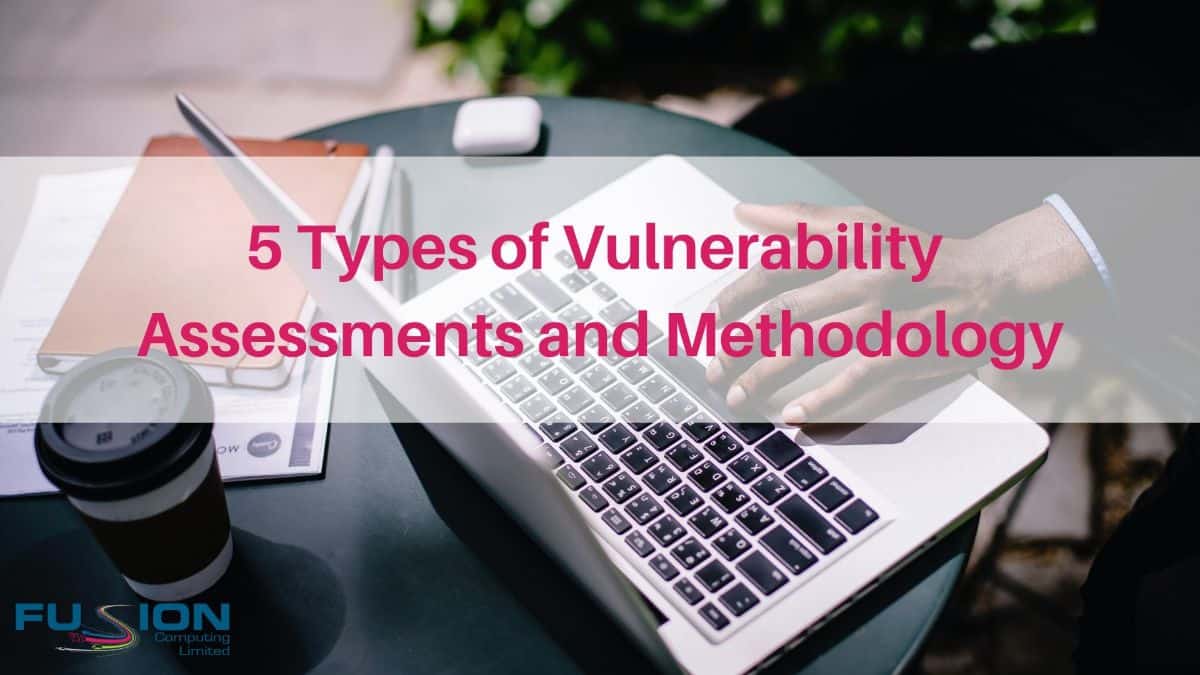If there was ever a reason needed to perform a vulnerability assessment of your systems this would be it–nearly 80% of Canadian businesses experienced a successful cyber attack last year. Knowing what vulnerability assessment methodology you should employ is key to closing gaps in your security.
Vulnerability scanners are automated tools that create inventories of all the IT assets connected to your network, including desktops, laptops, servers, firewalls, printers and so on. They can also provide details on each asset, such as which operating system and software version is installed and how many open ports and user accounts it has.
This information is valuable to businesses because it makes it easier to assess their computing systems, networks and applications for security vulnerabilities. IT teams use vulnerability assessment tools to identify security weaknesses in the technology environment, assess risk, and provide recommendations on how the vulnerabilities can be fixed.
Psst… You’ve Not Looked Under the Source CodeMost businesses don’t have the in-house expertise to perform more than just a superficial scan of their IT. |
5 Types of Vulnerability Assessments Critical for All Businesses
Security vulnerability assessments have become an important and regular part of the overall IT strategy, and there are several different ways to perform them. Here are five of the most common types of vulnerability assessment methodologies:
1. Network-Based Scans
Network vulnerability scanners examine wired and wireless networks to identify suspected security threats and weaknesses. They look for unknown or unauthorized devices and systems on the network and provide information on unknown perimeter points, including unauthorized remote access and insecure network connections.
2. Host-Based Scans
This type of assessment finds vulnerabilities in servers, workstations and other network hosts, as well as provides detail on configuration settings and update histories. It can be used to gain insight into possible threats and issues that could arise from outsider access to your network.
3. Wireless Scans
Wireless vulnerability scanners can pinpoint rogue access points and ensure your business’s network is configured in a way that is secure.
4. Application Scans
This type of assessment scans websites to find known software vulnerabilities, and network or web applications configurations that could cause security issues.
5. Database Scans
These tools identify weaknesses in the configuration of a database and help determine what to change to prevent cyber attacks.
Maximize the Effectiveness of your Scans With the Correct Vulnerability Assessment Methodology
Each of these scans can be performed in different ways; they can be external or internal, and authenticated or unauthenticated. Let’s take a look at what that means.
- An external vulnerability scan is carried out from outside the network, targeting IT infrastructure that is accessible via the internet, including web applications and ports. It’s a good way to get a sense of your network security weaknesses and detect vulnerabilities such as open firewalls and application firewalls.
- An internal vulnerability scan is conducted from inside the network, and is typically used to toughen up security in systems that are only accessible to users with network access. It focuses on preventing insider threats from rogue employees or attacks from hackers who have cracked into the network.
- An authenticated vulnerability scan is performed by allowing a tester to log into the network so they can see vulnerabilities from the point of a verified user.
- An unauthenticated vulnerability scan only gives the view of a would-be attacker, allowing the tester to check if there are holes in security that could be exploited from the outside.
Rather than being a one-off task, vulnerability assessments should be conducted regularly, and are especially important when there have been changes to networks such as the addition of new services or equipment or a cloud migration.
It’s also worth noting that vulnerability analysis differs from penetration testing in that it’s not trying to attack the system, just report on threats.
How to Perform a Vulnerability Assessment
Vulnerability assessments are a proactive part of the IT strategy that help businesses put security measures in place before attacks occur. They can save many headaches later down the road by preventing unauthorized access to your systems, loss of data and other damage.
Vulnerability assessments are typically made up of five key steps:
- Identifying the vulnerabilities
- Determining how they could be exploited
- Measuring the risk level and making recommendations to plug the gap
- Recording and reporting the findings
- Reviewing and updating the overall risk assessment
Vulnerability assessments are not an isolated activity, but a crucial component of a wider IT security strategy that includes penetration testing and other tactics. IT security threats are constantly evolving and only with a holistic strategy can a business keep its environment safe.
|
Bolster Your Security Apparatus: |
To best support the strategy, a vulnerability assessment must provide accurate risk ratings, the wider organizational context of a vulnerability, intelligence into threats, and how the overall makeup of the IT infrastructure affects the vulnerability profile.
The most valuable automated vulnerability scanning tools are ones that can accurately and thoroughly assess the IT environment and provide detailed insights and recommendations to mitigate risk. They will be a powerful ally in giving you oversight of your security posture.
Using the Right Type of Vulnerability Assessment Is Just the Start
A well-executed vulnerability assessment puts your business on the path to cyber resiliency by letting you know which issues and weaknesses need to be understood and fixed before attackers find them. They can be challenging and time-consuming, but they’re nothing compared to suffering a cyber attack, and it’s extremely important to do them right.
Fusion Computing is one of Toronto’s leading managed service providers and we are highly experienced in carrying out the full suite of vulnerability assessments. We use the latest fool-proof methodologies to ensure your business is safe.
Contact us today to learn more about how vulnerability assessments can protect your IT environment and keep attackers at bay.


